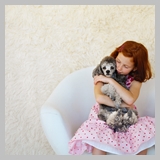How to find a great veterinarian
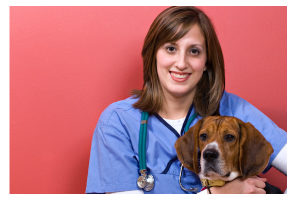 Much like the quest for the “right” human doctor, finding a veterinarian that you trust is a critical pet owner task. If you like your veterinarian (and how the vet’s office operates), you will be more likely to keep up with annual checkups and vaccinations, and you will be more likely to seek advice if your pet develops new symptoms.
Much like the quest for the “right” human doctor, finding a veterinarian that you trust is a critical pet owner task. If you like your veterinarian (and how the vet’s office operates), you will be more likely to keep up with annual checkups and vaccinations, and you will be more likely to seek advice if your pet develops new symptoms.
You are your pet’s best advocate, and your vet should understand this and seek your input about changes in your pet over time.
You need to ask many of the same questions about your pet’s potential doctor that you would ask about a personal doctor:
- Is the doctor qualified to treat your pet?
- How do current and past clients rate the doctor’s performance?
- Does the doctor’s personality and style work with you and your pet?
QUALIFICATIONS
- If you’ve found your vet through a reputable source, chances are that he or she is licensed. If you are in doubt, contact your state’s Veterinary Licencing board to confirm the vet’s status.
- You can call the Veterinary School the veterinary graduated from to confirm his or her status.
- Ask the prospective vet to provide information about specialized training and continuous education strategies for the vet and the vet’s office. This can tell you how progressive and current the vet’s practice will be.
REPUTATION
- One of the best ways to find your next vet is to ask friends, family, breeders and other folks-in-the-know for a recommendation.
- You and your pet will deal with all of the office staff and vet techs as much or more than the actual veterinarian, so be sure to ask about the entire experience with the veterinarian’s office.
- Many online service directories allow clients to leave reviews and recommendations. Do a quick internet search on your veterinarian candidate and see what pops up. Keep in mind that a bad experience may be due to personality conflicts or special circumstances, but if you see a trend of not-so-positive comments, you should steer clear.
STYLE & PERSONALITY
Both you and your pet should feel comfortable with your vet and vet’s office. (Okay, most cats and some dogs will never be okay with a trip to the doctor. In that case, at least you should feel good about the visit.)
- Gruff, clinical and knowledgeable or social, chatty and engaging? Do you want your veterinarian to be the all knowing expert or a helpful resource? Keep this in mind as you research potential vets.
- Some folks want a deeper relationship with their pet’s doctor. They want to visit and discuss every symptom and behavior. Other folks want to get it over with – no chit chat. Let’s just say that there is not much more annoying than dealing with someone who is behaving the exact opposite of what you want.
- Ask about the standard length of appointments, emergency service options and hours of operation. This gives you a sense of how available and responsive the vet will be.
There are two doctors at my vet’s office. One is chatty and progressive; she likes to research things online and is up on all the latest vet news. The other is much more traditional; he says “this is the way we treat XYZ. period.” Both are capable and engaging veterinarians, but they probably appeal to different parts of their customer base.
REMEMBER: If you lose faith in your veterinarian or get a bad vibe, the good news it that it is easier to switch your vet than it is to switch your human doctor. Try not to feel guilty if this happens to you, there is no one-veterinarian-fits-all mandate.
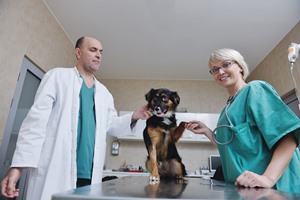 If you lose faith in your veterinarian or get a bad vibe, the good news it that it is easier to switch your vet than it is to switch your human doctor. Try not to feel guilty if this happens to you, there is no one-veterinarian-fits-all mandate.
If you lose faith in your veterinarian or get a bad vibe, the good news it that it is easier to switch your vet than it is to switch your human doctor. Try not to feel guilty if this happens to you, there is no one-veterinarian-fits-all mandate.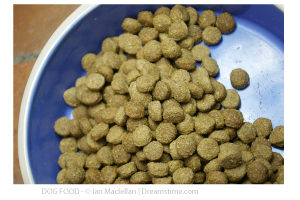 r own dinnerware. So many designer patterns and just fun bowls to choice from that making a decision can be difficult. Choose a bowl based on your dog’s needs.
r own dinnerware. So many designer patterns and just fun bowls to choice from that making a decision can be difficult. Choose a bowl based on your dog’s needs. Grooming is a very important part of your dog’s life. Learning young to tolerate bathing, clipping their nails and brushing their coats and teeth is essential to long term health and well being. With a few simple supplies and some patience and effort on your part grooming can be enjoyable for you and your new friend.
Grooming is a very important part of your dog’s life. Learning young to tolerate bathing, clipping their nails and brushing their coats and teeth is essential to long term health and well being. With a few simple supplies and some patience and effort on your part grooming can be enjoyable for you and your new friend. but it can also be a lot of fun. This game teaches your puppy that answering to his name is not only exciting but very rewarding.
but it can also be a lot of fun. This game teaches your puppy that answering to his name is not only exciting but very rewarding.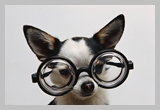
 In this case, we want to teach your dog that it is always good and fun to come when called. This game works best if you have a hallway in your home. Even a small one can work. If you do not have a hallway then go to an enclosed room and have everyone sit in a large circle.
In this case, we want to teach your dog that it is always good and fun to come when called. This game works best if you have a hallway in your home. Even a small one can work. If you do not have a hallway then go to an enclosed room and have everyone sit in a large circle.
